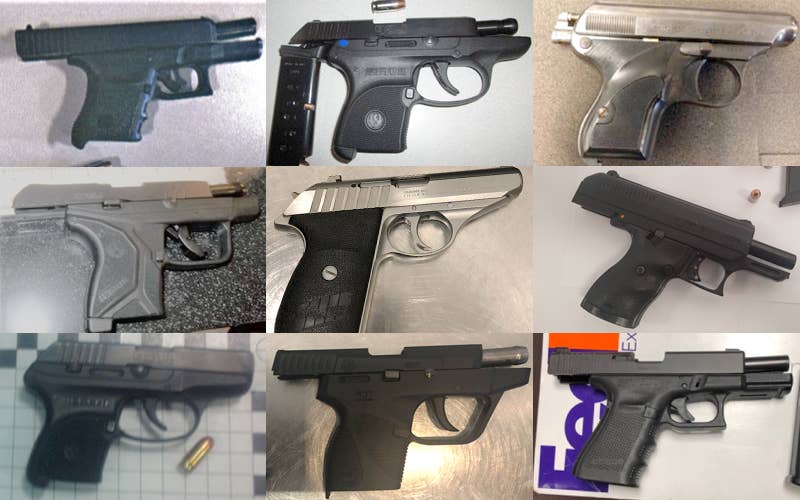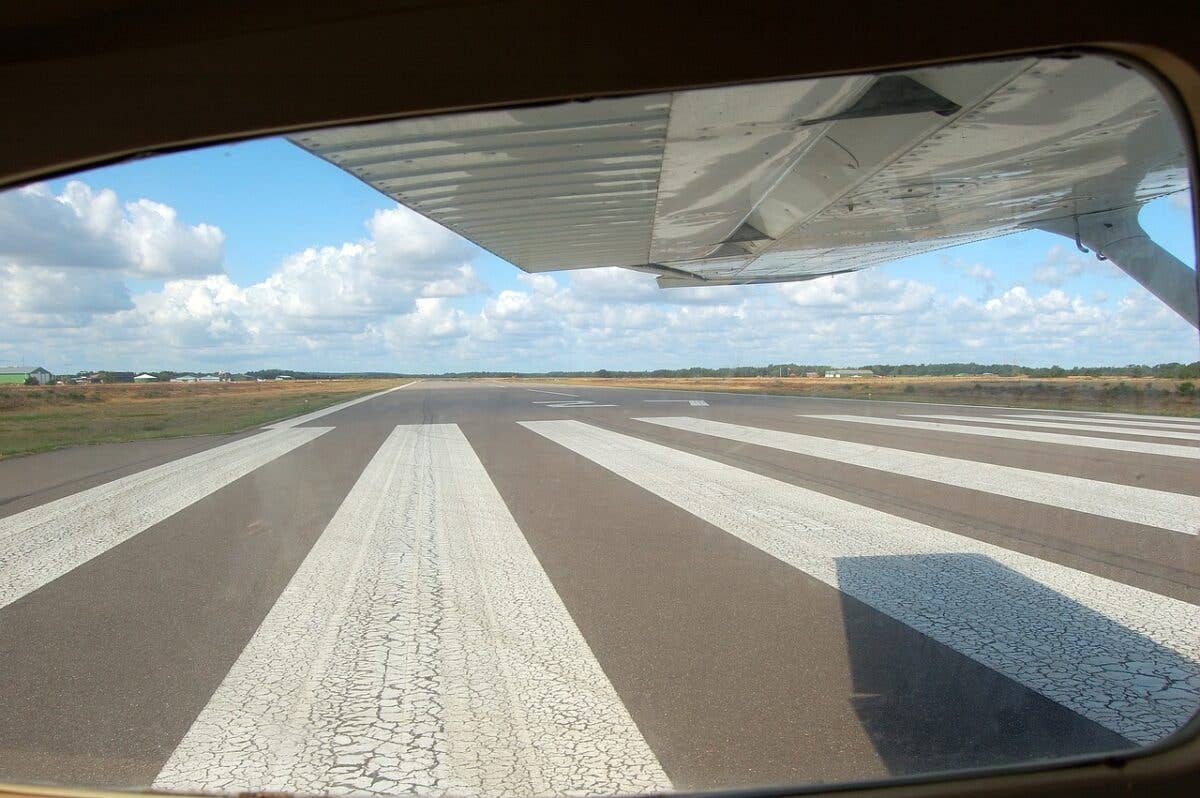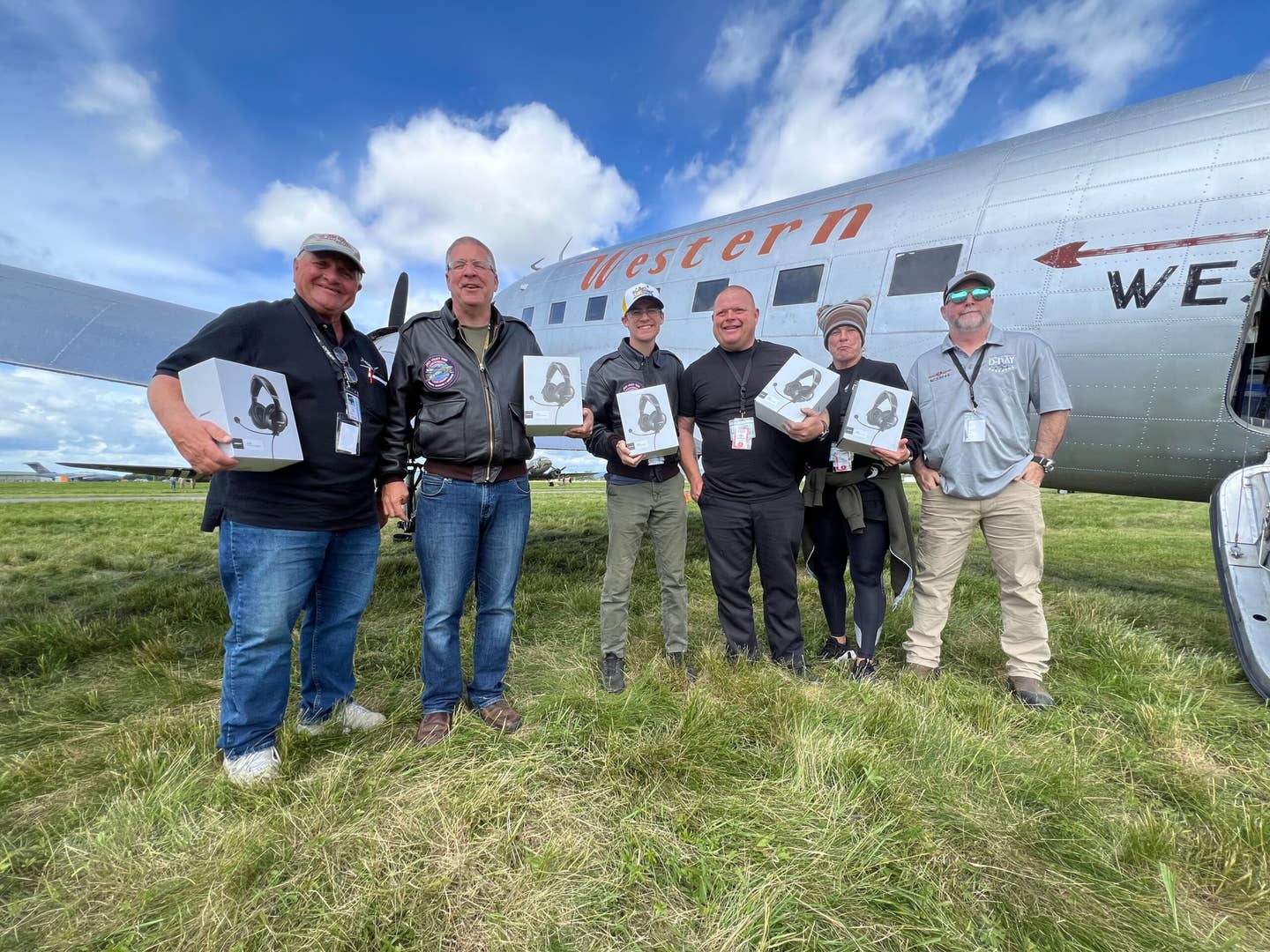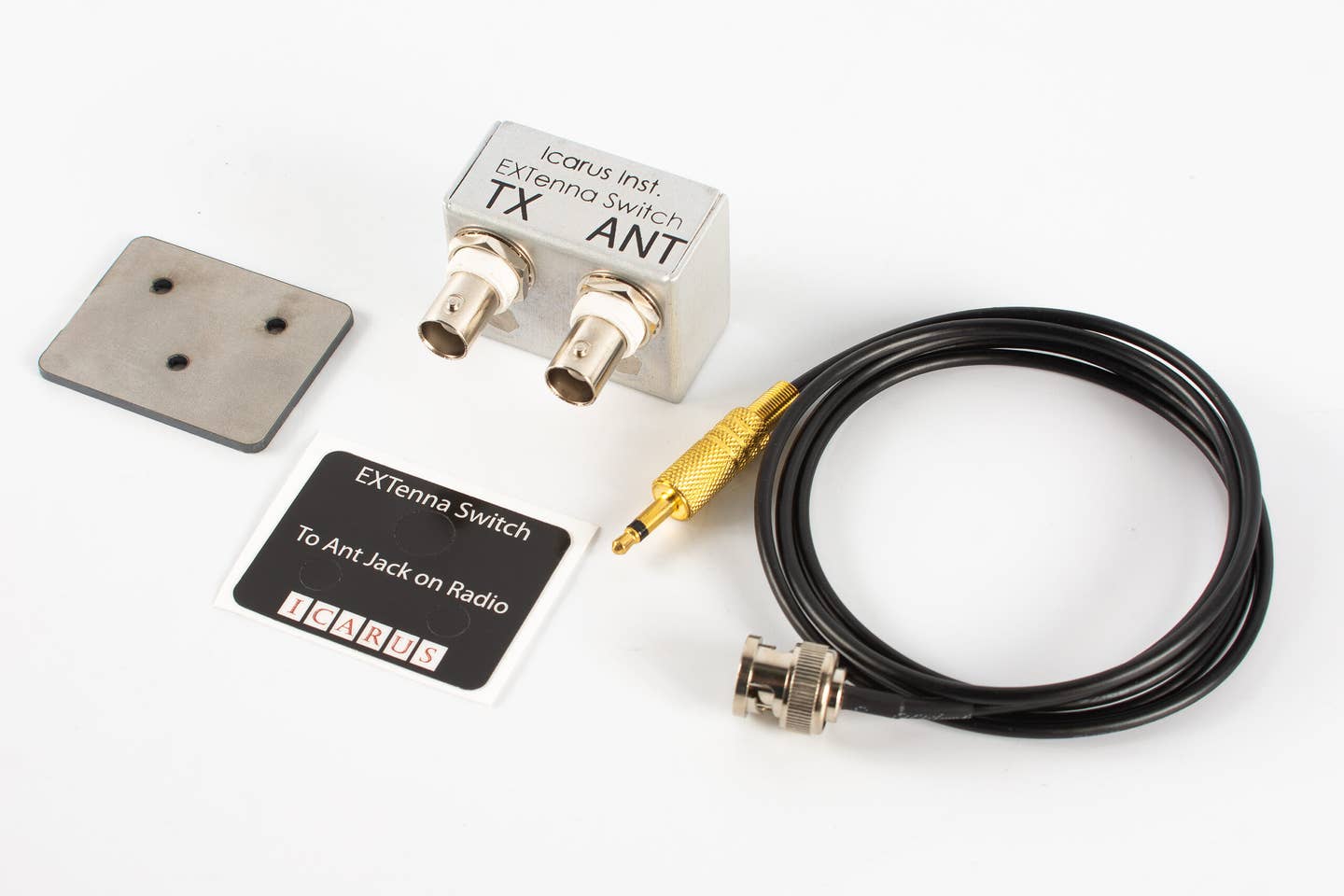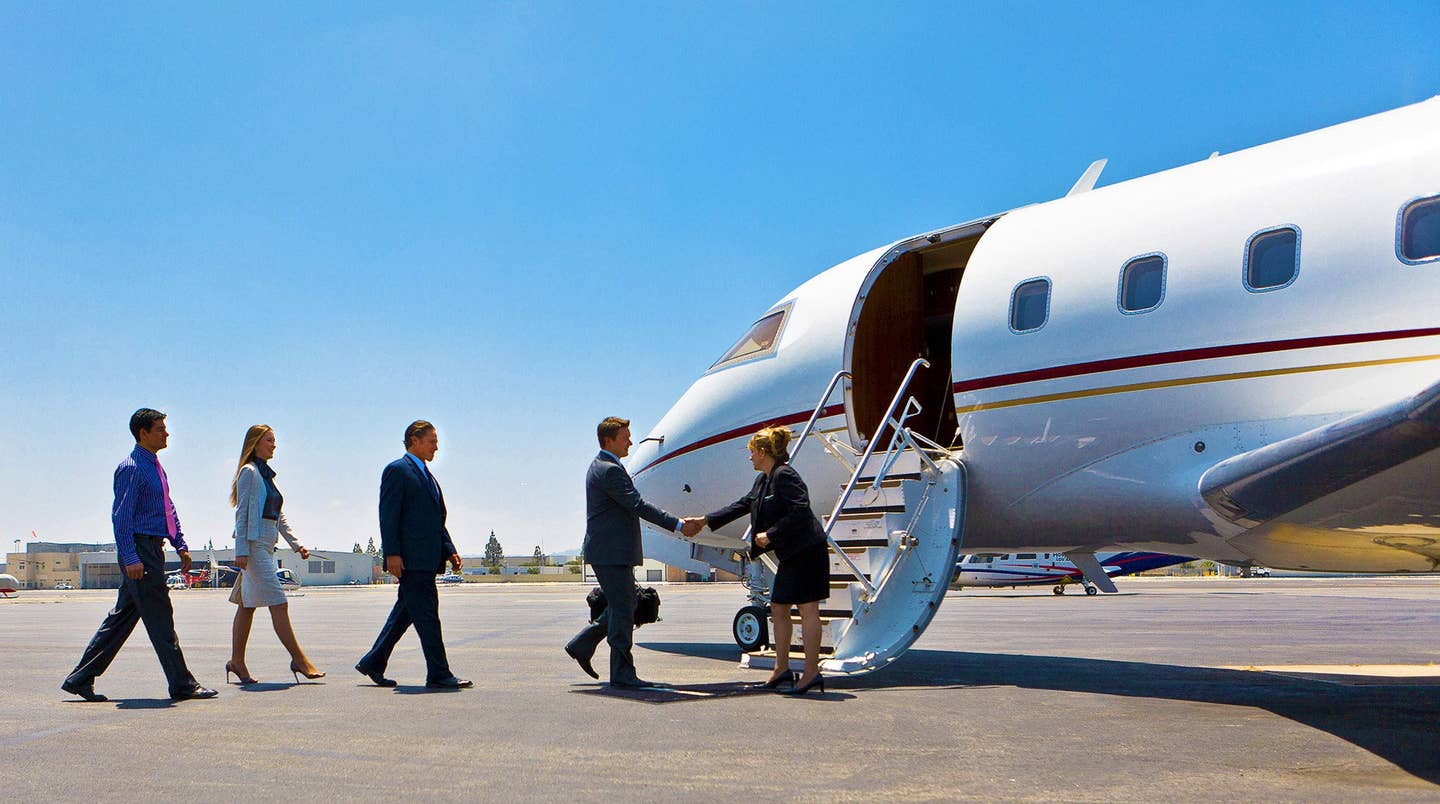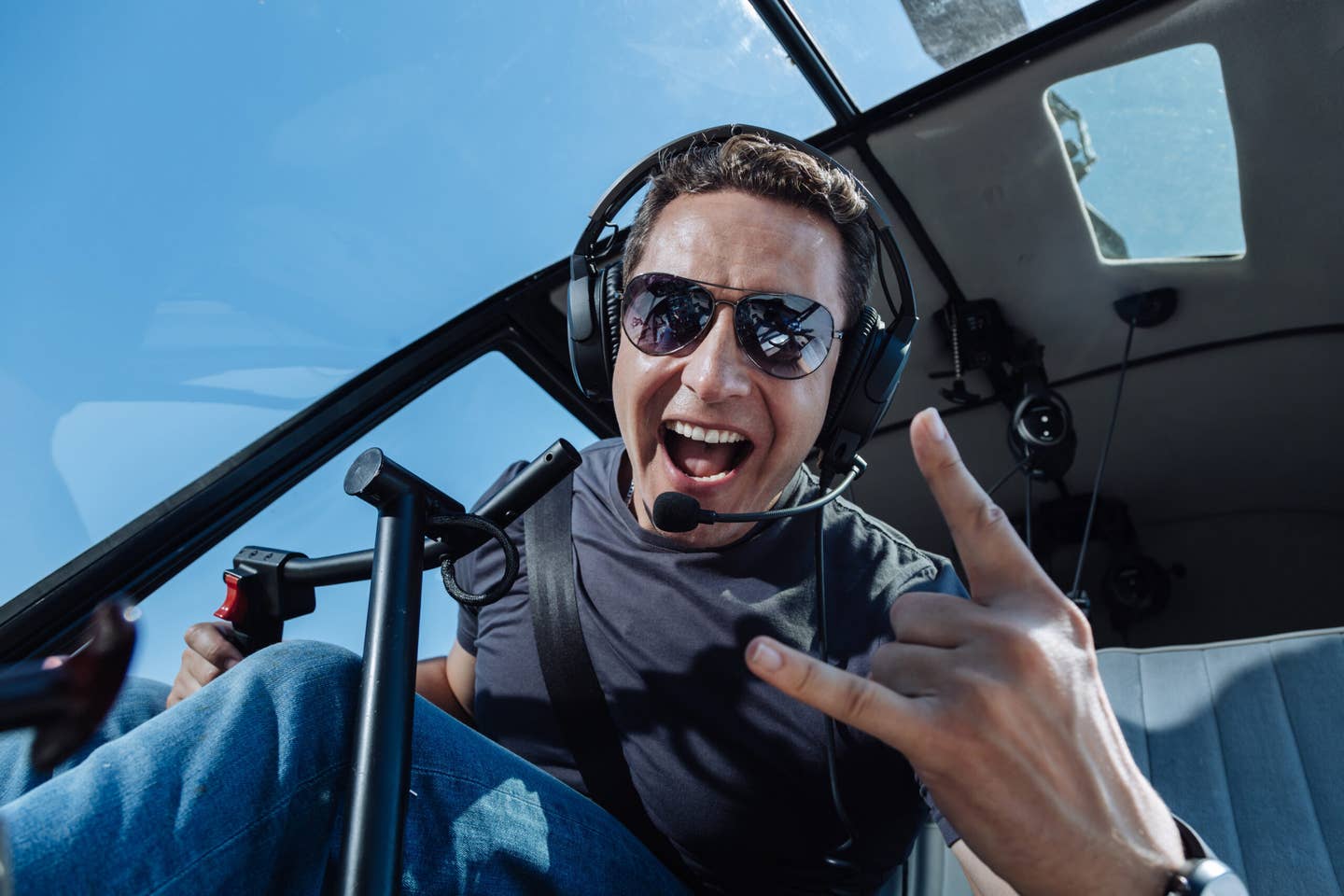
Your eyes are your most important asset while flying. [File photo: Adobe Stock]
When you climb into the cockpit, your eyes become your most important asset in ensuring a safe flight. Sunglasses are key to protecting your sight. Here are some of FLYING's favorite aviator sunglasses that also allow for customization with prescription lenses if needed.
Quicklook: Best Aviator Prescription Sunglasses
- Ray-Ban Aviator Sunglasses: Best for classically styled eye protection
- Serengeti Summit Sunglasses: Best budget option
- Serengeti Velocity Sunglasses: Best lightweight eye protection
- Randolph White Gold Classic Aviators: Best splurge option
- Flying Eyes Golden Eagle Sport: Best wrap-around prescription sunglasses
- Flying Eyes Cooper Aviator: Best for headset comfort
- Randolph Chrome Classic Aviator: Best for durability
7 Best Aviator Prescription Sunglasses and Goggles
There are heaps of choices when deciding on a pair of prescription aviator sunglasses. Here are some of our favorites.
Ray-Ban Aviator Sunglasses
Best For: Classic Look
For pilots, Ray-Ban Aviators have long been considered the gold standard when it comes to looking the part. And for good reason—the sunglasses have been used by U.S. pilots since 1937, according to the company. The iconic design assures that generations later, these sunglasses will be stylish in and out of the cockpit.
Size: Lens widths: 55, 58, and 62 mm
Lens Type: Polarized and non-polarized
Replaceable Lens: Yes
Anti-Fog: No
Photochromic: Yes
Adjustable Nose Bridge: Yes
Special Features:
- Iconic style originally designed for U.S. pilots in the 1930s
- Lenses made of high-quality glass
- Frame conforms to your head shape
Benefits:
- Multiple frame and lens color options
- Durable wire frames
- 100 percent UV protection
Disadvantages:
- Cost
- Some purchasers complain of thin, flimsy frame construction
- Heavy
Serengeti Summit Sunglasses
Best For: Full spectrum UVA protection on a budget
Serengeti Summit sunglasses offer a lot of high-end features for a fraction of the price of high-end performance sunglasses. They feature lightweight, scratch-resistant, and impact-resistant photochromic lenses held in place by a durable nylon frame. They were designed by Bolle Sunglasses for use in numerous light situations—a plus for any pilot.
Size: One size
Lens Type: Scratch and impact-resistant borosilicate mineral glass lenses
Replaceable Lens: Yes
Anti-Fog: No
Photochromic: Yes
Adjustable Nose Bridge: No
Special Features:
- Wrap-around design for full protection
- Photochromic lenses gradually darken in bright light
Benefits:
- Scratch and impact-resistant lenses
- Lightweight
- Light, thin lenses
Disadvantages:
- Frames are narrow
- Some purchasers complain of fogging lenses
Serengeti Velocity Sunglasses
Best For: Lightweight eye protection
Serengeti's Velocity sunglasses have a robust fan base. Their lightweight titanium frames and photochromic lenses make them comfortable to wear. "I’ve been a professional pilot for over 30 years and these are the only sunglasses I will ever consider purchasing," said one reviewer.
Size:
- Lens width: 61 mm
- Lens height: 39 mm
- Arm length: 130 mm
Lens Type: non-polarized mineral glass
Replaceable Lens: Yes
Anti-Fog: No
Photochromic: yes
Adjustable Nose Bridge: Yes
Special Features:
- Titanium frame
- Two-year manufacturer warranty
Benefits:
- Classic styling
- Mineral lenses are 20 percent thinner and lighter than other sunglasses
- Lenses are chemically tempered for scratch and impact resistance
Disadvantages:
- Cost
- Some purchasers have complained about the quality of the materials
Randolph White Gold Classic Aviators
Best For: Premium style
If you're in the market for heirloom quality eyewear, Randolph White Gold Classic Aviators have you covered. These classically styled sunglasses, which have been issued by U.S. military pilots since the late 1970s, come with a lifetime guarantee on the frames. They're also designed to fit snugly under helmets and headsets.
Size: 52, 55, and 58 mm
Lens Type: Polarized glare prevention with UVA/UVB protection
Replaceable Lens: Yes
Anti-Fog: No
Photochromic: No
Adjustable Nose Bridge: Yes
Special Features:
- Premium quality frames with 23K gold finish
- Made in the U.S. in a six-week process that includes 200 steps
- Lifetime warranty on all frames
Benefits:
- Engineered optical lenses designed for flying
- Temples fit under helmets and headphones
- Lenses are double baked for scratch resistance
Disadvantages:
- Cost
Flying Eyes Golden Eagle Sport
Best For: Wrap-around sunglasses
Size:
- Frame width: 129 mm
- Lens size: 59 mm x 32 mm
Lens Type: Single vision, lined bifocal, progressive bifocal
Replaceable Lens: Yes
Anti-Fog: No
Photochromic: No
Adjustable Nose Bridge: Yes
Special Features:
- Temples wrap around your head, not your ears
- Shatterproof polycarbonate lenses
- Prescription compatible
Benefits:
- Designed to be comfortable with a helmet or headset
- Lightweight
Disadvantages:
- Cost
Pricing: $410
Flying Eyes Cooper Aviator
Best For: Comfort
If you're a pilot with a larger head, finding comfortable prescription sunglasses that fit under a headset can be tricky. According to Flying Eyes, its sunglasses are engineered with comfort in mind. The Cooper Aviators are lightweight and made of a material that is flexible and virtually unbreakable.
Size:
- Frame width: 146 mm
- Lens size: 60 mm x 51 mm, 14 mm bridge
Lens Type: Polycarbonate
Replaceable Lens: Yes
Anti-Fog: No
Photochromic: No
Adjustable Nose Bridge: No
Special Features:
- Specially designed to be worn with a headset or helmet
- Ideal for those with medium- to large-size heads and faces
Benefits:
- Lightweight
- Temples wrap smoothly around your head
Disadvantages:
- Cost
Pricing: $229 - $249
Randolph Chrome Classic Aviator
Best For: Durability
Randolph Chrome Classic Aviators protect your eyes while looking stylish. These sunglasses have been issued to U.S. military pilots since the late 1970s and come with a lifetime guarantee on the frames. They're also designed to fit snugly under helmets and headsets.
Size:
- Lens widths: 52 mm
- 55 mm, and 58 mm
Lens Type: Non-polarized
Replaceable Lens: Yes
Anti-Fog: No
Photochromic: No
Adjustable Nose Bridge: Yes
Special Features:
- Made by the supplier of U.S. military pilot aviator sunglasses
- Lifetime guarantee
Benefits:
- 100 percent UVA/UVB protection
- Anti-reflective coating to reduce light reflection
Disadvantages:
- Cost
Why Aviator Sunglasses?
When it comes to flying an airplane, your vision is your most important asset. A good pair of quality sunglasses—with prescription lenses, if needed—is an essential part of the gear needed by any pilot in the cockpit.
Fit
The fit and size of frames is an important detail when considering a pair of prescription aviator sunglasses. The frames must be functional, but shouldn't interfere with your headset or helmet. Also, frames that have small lenses may let in too much light.
Prescription and Lens Type
When choosing a pair of sunglasses to wear while flying, steer clear of polarized lenses, which can distort or interact with displays in the cockpit.
Tint
Photochromic lenses that automatically darken when exposed to UV may have limited ability to transition to warm temperatures over 70 degrees. Tinted lenses, such as gray, gray-green, and brown, are all excellent choices when selecting sunglasses, according to the FAA. "Gray [neutral density filter] is recommended because it distorts color the least," the agency said.
Why Aren’t Polarized Sunglasses Recommended for Pilots?
Polarized sunglasses are not recommended for pilots because they can reduce or eliminate the visibility of aircraft instruments with anti-glare filters. Polarized lenses could also potentially interfere with visibility out of an aircraft windscreen, such as masking light sparkles from shiny material like other aircraft, which could lessen the time a pilot has to react.
The Sky's The Limit
When it comes to choosing the best prescription aviator sunglasses, there are plenty of options in a range of prices that keep functionality while also staying stylish.
FAQ
What Sunglasses Can Pilots Wear?
Pilots should wear sunglasses that protect their vision and screen out between 70 to 85 percent of visible light.
What Color Lens Is Best for Pilots?
Tinted lenses, such as gray, gray-green, and brown are all popular choices for pilots. Gray is a neutral density filter and distorts color the least.
Are Gradient Lenses Good for Pilots?
While polarized lenses are off-limits for pilots, gradient tinted lenses offer additional sunlight and glare blocking in the upper area of the lens.

Subscribe to Our Newsletter
Get the latest FLYING stories delivered directly to your inbox

